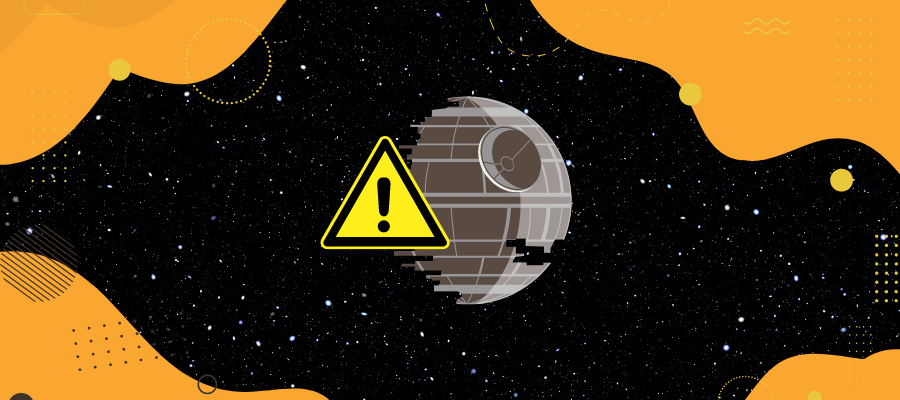The Death Star: a colossal space station, a symbol of the Empire’s power, and the setting for countless intergalactic adventures. But have you ever wondered how this massive structure managed its health and safety protocols? Fear not, fellow Star Wars enthusiasts, as we explore the hypothetical health and safety checks that might have been necessary on the Death Star, and how the personnel managed the unique challenges of working with Darth Vader himself.
Death Star Health and Safety: A Galactic Guide
While the Death Star is the stuff of legends, its hypothetical health and safety measures are not so different from those in real-world industrial settings. Here’s a list of potential checks that could have been required on the infamous space station:
- Structural integrity checks: You wouldn’t want the floor to give way during an Imperial march, would you?
- Air quality monitoring: After all, heavy breathing is already a problem for some.
- Radiation protection: Space is full of it, and not just from the Emperor’s lightning.
- Emergency preparedness: In case of a Rebel attack or hazardous material spills.
- Life support systems maintenance: Oxygen generation, temperature control, and waste management – all crucial in space.
- Electrical safety: The Dark Side already has enough shocking surprises.
- Fall protection: In a galaxy without handrails, this is particularly important.
… and the list goes on.
The Outer Space Factor: Unique Challenges of the Death Star Environment
Operating within the vastness of space, the Death Star faced numerous challenges that set it apart from terrestrial environments.
Dealing with microgravity: The low-gravity environment on the Death Star would have required adaptations in work processes and living arrangements. Ergonomic design would have been crucial to accommodate the altered muscle movements and weight distribution in microgravity. Additionally, exercise and mobility aids would be necessary to counteract the negative effects of reduced gravity on the musculoskeletal system.
Space debris and meteoroids: The Death Star’s massive size made it a potential target for space debris and meteoroids. To protect against these collision risks, the station would need advanced detection systems, reinforced shielding, and protocols for maneuvering to avoid incoming objects.
Radiation exposure: In space, the absence of Earth’s atmosphere means higher exposure to cosmic rays and solar radiation. The Death Star would have required robust radiation shielding and monitoring systems to protect personnel from harmful radiation levels.
Space travel-induced health issues: Long-term space travel presents physical and mental challenges. Muscle and bone deterioration, cardiovascular issues, and mental health concerns like isolation and stress would need to be addressed through comprehensive health and wellness programs on the Death Star.
The Darth Vader Dilemma: Health and Safety in the Presence of the Dark Lord
Working with Darth Vader would have posed unique health and safety concerns for Death Star personnel. To address these dangers, the following measures could have been implemented:
- Vader Awareness Training: Because you don’t want to accidentally spill coffee on his cape.
- Vader Safety Zones: Designated areas where Vader is most likely to be present, to minimize unpleasant surprises.
- Psychological Support: Dealing with a Sith Lord can be a bit… intimidating.
- Conflict Resolution Training: In case you accidentally disagree with his plans to crush the Rebellion.
- Personal Protective Equipment (PPE): To protect against potential Force-related incidents – helmets are more than just a fashion statement.
Force-related Incident Protocol: Because sometimes, a Force choke is more than just a metaphor.
Case Studies: Death Star Safety Incidents and Lessons Learned
While entirely hypothetical, these potential safety incidents on the Death Star can provide valuable insights:
Accidents involving machinery or weaponry: The Death Star housed complex machinery and powerful weaponry. Proper training and equipment maintenance would be crucial to preventing mishaps. Regular inspections, safety drills, and thorough training would minimize the risk of accidents.
Breaches in hull integrity: The Death Star’s massive size and complex structure necessitated routine inspections and a rapid response to hull damage. Reinforced bulkheads and automated damage control systems would be essential for maintaining structural integrity and preventing catastrophic failure.
Environmental control failures: Life support system malfunctions could have devastating consequences on the Death Star. Redundant systems, regular maintenance, and emergency response plans would be vital for maintaining a safe and habitable environment.
Though the Death Star is a fictional construct, its imagined health and safety challenges offer a fascinating glimpse into the logistics of managing such an immense space station. From air quality monitoring to Vader Awareness Training, these measures not only ensure a safe work environment but also provide a unique perspective on the everyday lives of those aboard the iconic battle station.
Remember, safety is essential, even in a galaxy far, far away. And if you ever find yourself in the presence of Darth Vader, don’t forget to follow protocol and maintain a respectful distance – just in case.



